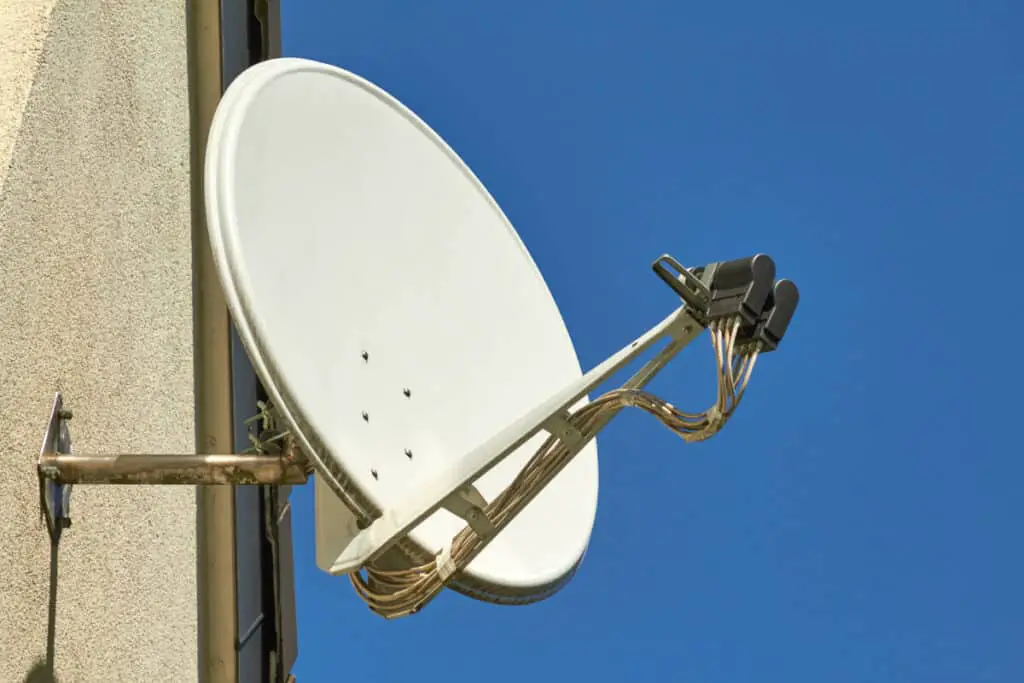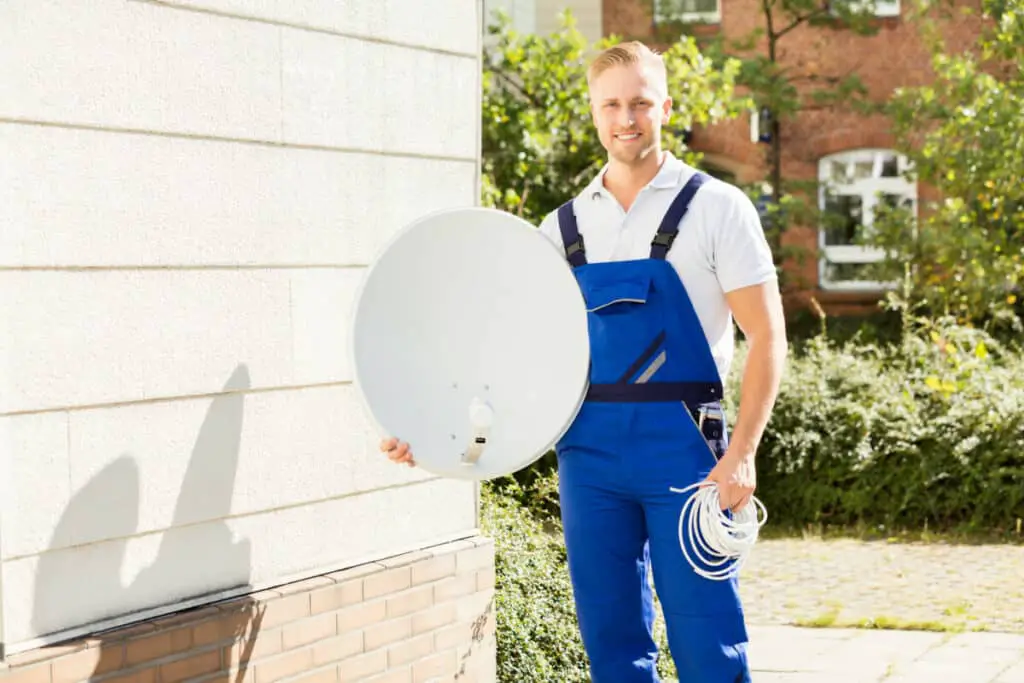
In the modern age of streaming services, satellite dishes are becoming increasingly obsolete. If you have a satellite dish you no longer use, there are a couple of different ways to dispose of it.
To dispose of an old or unused satellite dish, be sure to first cancel the service with the provider. Safely disconnect the mounting gear, then bring the satellite dish to a local e-waste facility. Participating retailers like Best Buy and DISH will also accept old satellite dishes.
You may be tempted to just throw the old satellite dish away with the rest of your garbage, but it is actually considered e-waste and can be harmful to the environment. Here are the easy things you can do to dispose of the dish responsibly.
Satellite Dish Materials
To understand why you shouldn’t just throw the old satellite dish away, it will be helpful for you to know what it’s made of. Satellite dishes aren’t just made of plastic; they also contain metal components, circuit boards, and other hardware. While it is pretty easy to recycle plastics and metals, circuit boards contain electronic components like lead, mercury, cadmium, and other harmful substances that are illegal to send to landfills.
Electronics are difficult to recycle because they contain so many different materials. Recycling facilities cannot process plastic that is still attached to metal, or vice versa. Separating electronic materials into recycling components takes time and effort, which is why it is best to contact a professional service. This is your best bet for ensuring that all of the dish’s components are properly disassembled.
While plastic and metal are not inherently harmful to the environment in the way that circuit boards are, they do take up precious space in landfills and take decades to even begin decomposing. Sending plastics and metals to the appropriate recycling facility is an opportunity to responsibly reuse precious manufacturing materials and will help keep our planet green.
Satellite Dish Removal

This topic sparks a bit of controversy; many residents believe that is it the responsibility of the satellite service provider to dismount the dish from the roof when they are done using it. However, dish removal is actually the responsibility of the tenant who ordered the service originally. Once a satellite dish is installed, it becomes the property of the homeowner. The only parts that cable services recognize as their property are the receiver and client boxes, as stated in the user agreement. If this statement was not provided in writing on the day of the installation, then dismounting the dish becomes the property owner/manager’s responsibility.
Many cable customers do not understand this, which is why they become so frustrated with satellite services that they simply leave the old dish on its mount. If you’ve ever seen a building with two or three satellite dishes awkwardly situated on the roof, it’s because either tenants either don’t want to deal with the removal process, or don’t know how. Removing the mounting is simple; first, make sure you are completely disconnected from the dish service and that all electrical utilities are shut off. Then, use a drill to unscrew the mounting plate and any other components attaching the dish to the roof.
If you are uncomfortable climbing a ladder and using your own tools to dismount the satellite dish, services like DISH or DirectTV are more than happy to send someone out to do it for you. You will have to pay them a service fee, but their professional help may save you quite a bit of time in the long run. They will remove the dish, cabling, mounting poles, and brackets all in the same day. As a tenant, you are responsible for filling any holes and repairing any damage that may have been incurred by the satellite dish installation or removal.
Satellite Dish Recycling
Satellite dish service providers do not often advertise removal or recycling services, but almost all of their websites have links to the nearest local recycling facility for e-waste and they strongly encourage customers to follow through with recycling. DISH and DirectTV have return policies for equipment like receivers, and they even have reusable packaging for many of their products, but they leave the rest of the recycling up to you. Here are the receiver parts that they will accept after you’ve canceled your TV service account:
- Hopper 3
- Hopper with Sling
- Hopper
- Hopper Duo
- Wally
- 4K Joey
- Joey 2.0 or 3.0
- Wireless Joey
- Super Joey
- Smartcard
- VIP 722
- VIP 222
- 21.1 Remote
- LNBF
To recycle the rest of your satellite dish components, or the dish itself, start with locating the nearest Best Buy. Retailers like Best Buy partner with TV companies to provide customers easy access to recycling services. All you have to do is bring the old dish to a store near you, and the customer service desk will accept it and handle the recycling process from there.

If you don’t have access to a nearby drop-off location, you can also ship your old satellite dish through your nearest UPS Shipping Center. Mail it to the following address for recycling:
AER Worldwide
790 Berry Shoals Rd
Duncan, SC 29334
The only downside to recycling your old dish by mail is that you will have to pay the shipping fee. For some people, shipping fees are worthwhile or even negligible; for others, the extra cost can make or break the decision to recycle altogether. If you don’t want to pay shipping fees, you can always search through Earth 911‘s website for e-waste facilities or scrap vendors in your area. Both types of services would be more than happy to accept your old satellite dish and use its parts in new projects and products.
If your satellite dish is too big for you to carry, mail, or dismount on your own, services like LoadUp offer on-site pickup. They will come pick up your satellite dish and haul it away. It’s a pretty simple process! And though these options may sound like more work than they’re worth, it really only takes a couple extra minutes while you’re out running errands, and it’s completely worth making a positive economic and environmental impact.
Related Topics:
If you like the article above, here are some other similar articles you should check out!
